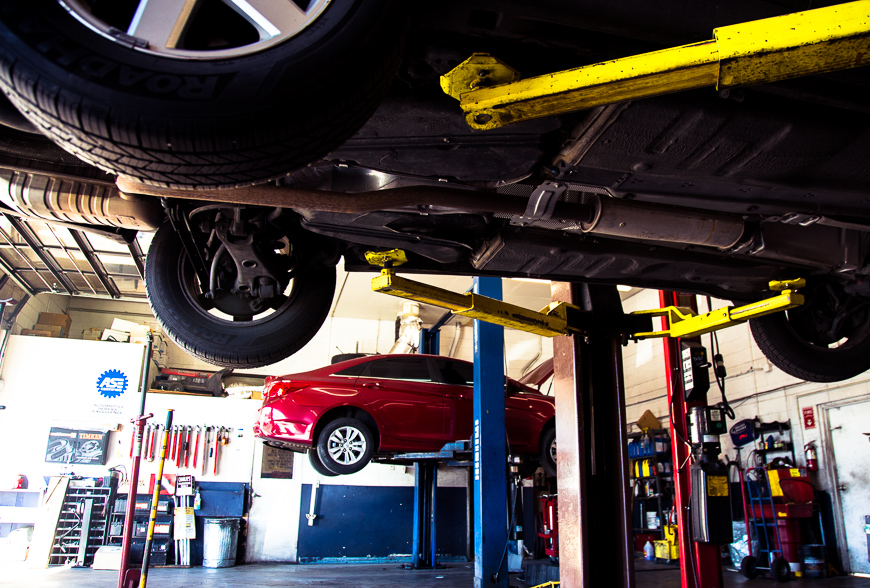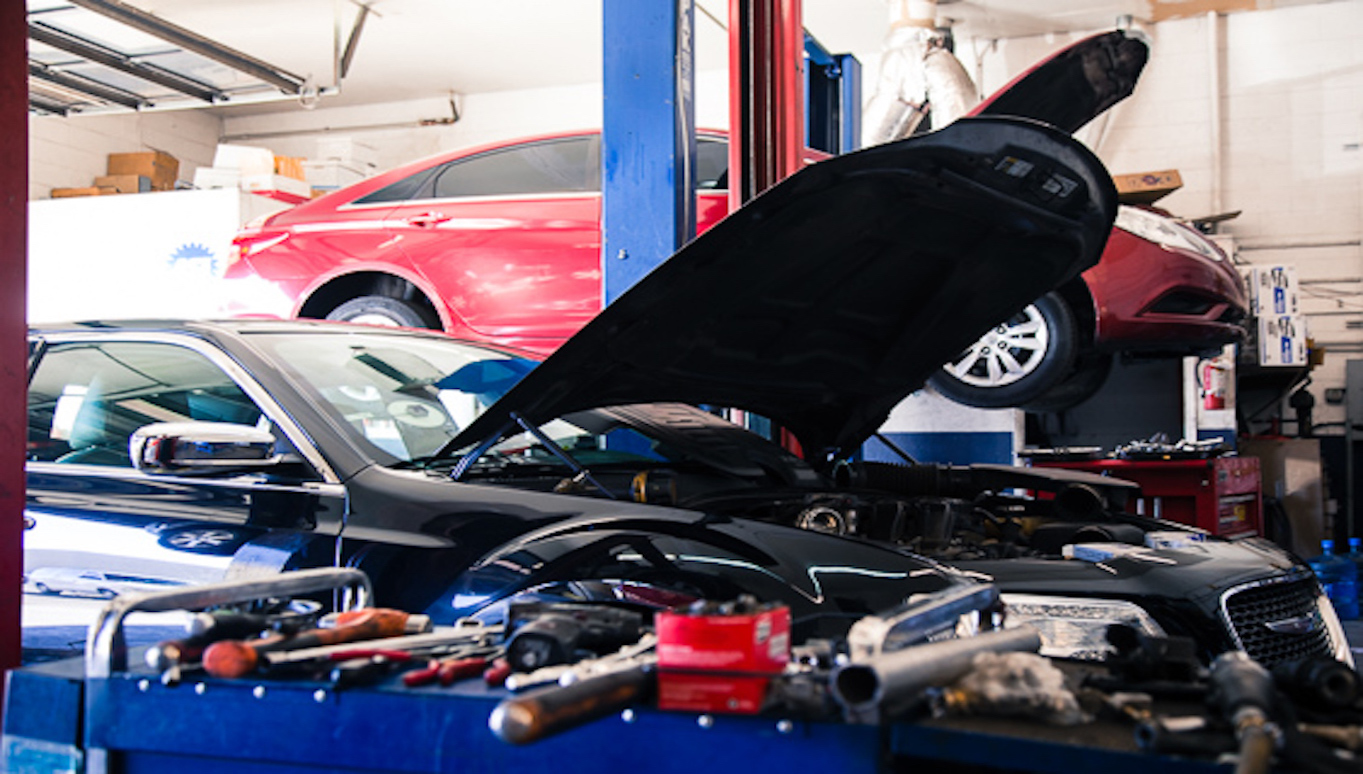- Transmission Service – Check Fluids – clean & odorless
- Road Test – mechanic may identify issues
- External Engine Inspection – possible causes
- Check Axles CVJoints Boots etc – possible causes
- Check Engine & Transmission Mounts
- Inspect Leaks – Gaskets & Seals
- Inspect drive shaft & undercarriage – possible causes
- Check Cooling System & Related Temperatures
- Check Differential Operation – Bearing & Gearbox inspection
- Inspect Transmission Pan – free of metal particles
- Computerized diagnostic
A LAS VEGAS TRANSMISSION SERVICE
Transmission INSPECTION
A Las Vegas transmission service that is local and honest. We repair, rebuild and replace automatic and manual transmissions.
How a Transmission Works
If your car is leaking red fluid, then it is time for transmission service. A car’s transmission is what enables it to shift gears and drive. Without a transmission your vehicle would not be able to go forward or reverse. However, there is much more to an automobile’s transmission than changing gears.
The transmission is the powertrain that converts the engine’s force into a controlled source of power. It acts as a mediator between the engine and the wheels. The transmission converts the engine’s power into torque, which is then transferred to the axles that rotates the wheels.
A car’s engine creates power and sends that power to the crankshaft. However, the power produced is way too high to attempt to drive. In addition, there are mathematical variables to be considered. If your car’s gears won’t shift properly, the go to your local garage for an inspection.
Transmission Service to the Rescue
The automotive transmission is able to control both your engine’s RPM, and the RPM of the wheels at optimal rates. In addition, it sends power to the differentials to turn the wheels. It does this all through the use of gear ratios. So how do gear ratios work?
How Gear Ratios Work
A transmission has toothed gears that interact with each other in order to produce torque. These gears are similar to a clock’s toothed wheels. A car’s transmission uses gear ratios to control motion and power.
For example, if you have an input gear with twenty teeth that interacts with an output gear that has ten teeth, in order to spin the gear with twenty teeth once, the ten tooth gear must make two full rotations.
A gear ratio is calculated by taking the number of teeth on the output gear and dividing it by the input gear. Thus, the gear ratio in this example is 1:2. However, in most cases the ratio used is “0.5:1”, which tells how many times the output gear must rotate for the input gear to make one full rotation.
Automatic Vs Manual Transmission
Whether you own a car with a manual transmission or an automatic transmission, your car’s transmission is vital to its mobility. An automatic transmission works similar to a manual one but it requires a lot less energy from the driver.
While a manual transmission requires the driver to manually change gear ratios, an automatic transmission does this on its own through the use of fluid pressure. Automatic transmission fluid provides the necessary pressure to activate clutches and bands that in turn determines what gear the vehicle should be in.
So transmission fluid enters the torque converter, which then activates clutches and bands. In turn, those determine what gear ratio should be engaged.
Automatic Transmission or Manual Transmission?
There was a time when a manual transmission could be considered more durable and more reliable. However, in today’s car an automatic transmissions meets the same standards as the manual transmission. In other words, the question of which transmission is better is more a matter of personal preference than quality.
Automatic Transmission Pros:
- Easier to use
- More widely available (95% of car sales in North America have an automatic transmission)
- Parts are easier to find
- More convenient
- Automatically changes gears
Cons:
- Steeper learning curve
- Not as widely available
- Less convenient
Manual
- Less maintenance
- Manual transmissions tend to have better fuel economy
- Cheaper repairs
- Less servicing required
- More control
Cons
- More expensive repairs
- Requires more maintenance
- Develops issues more often than manuals



